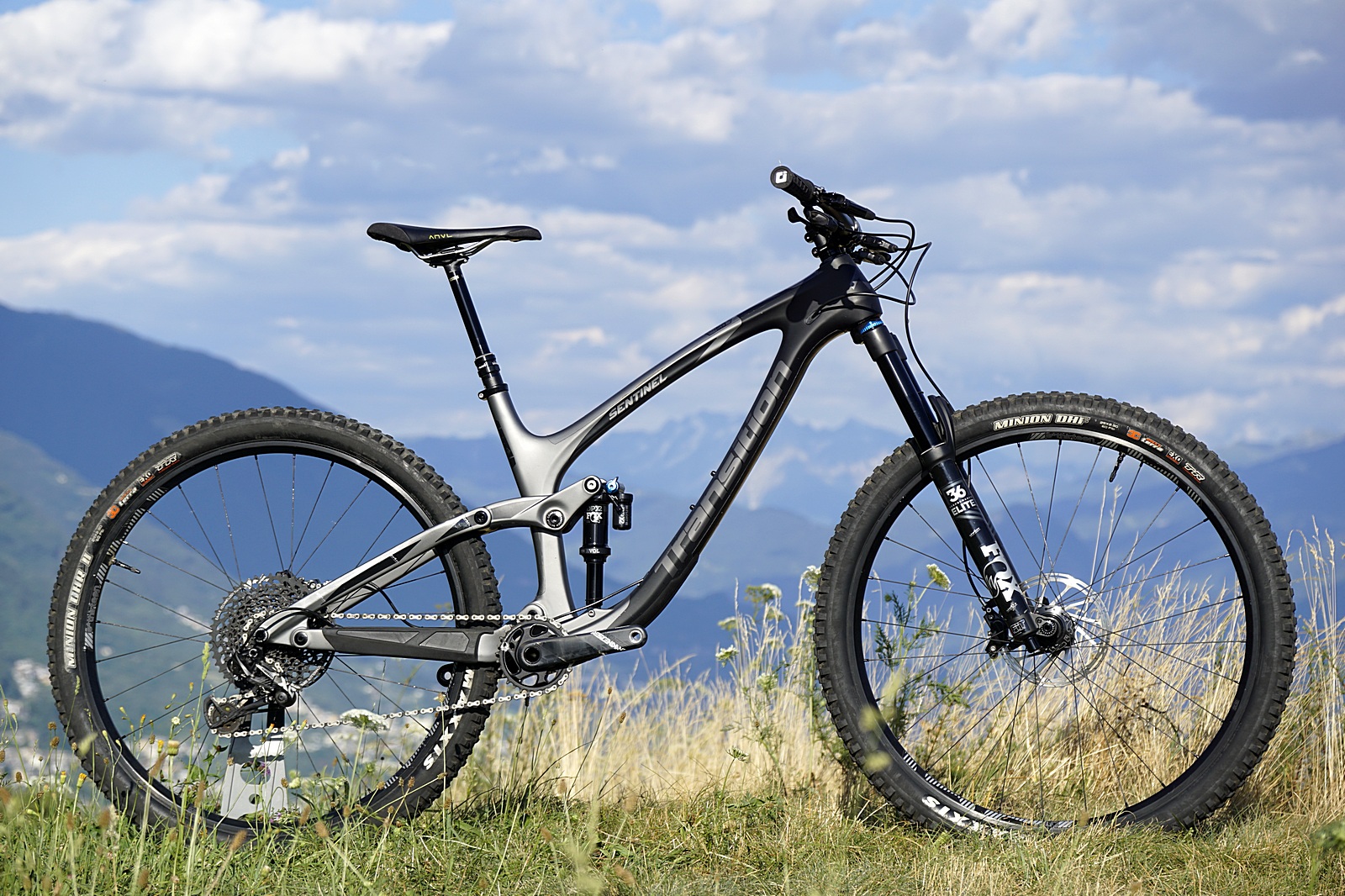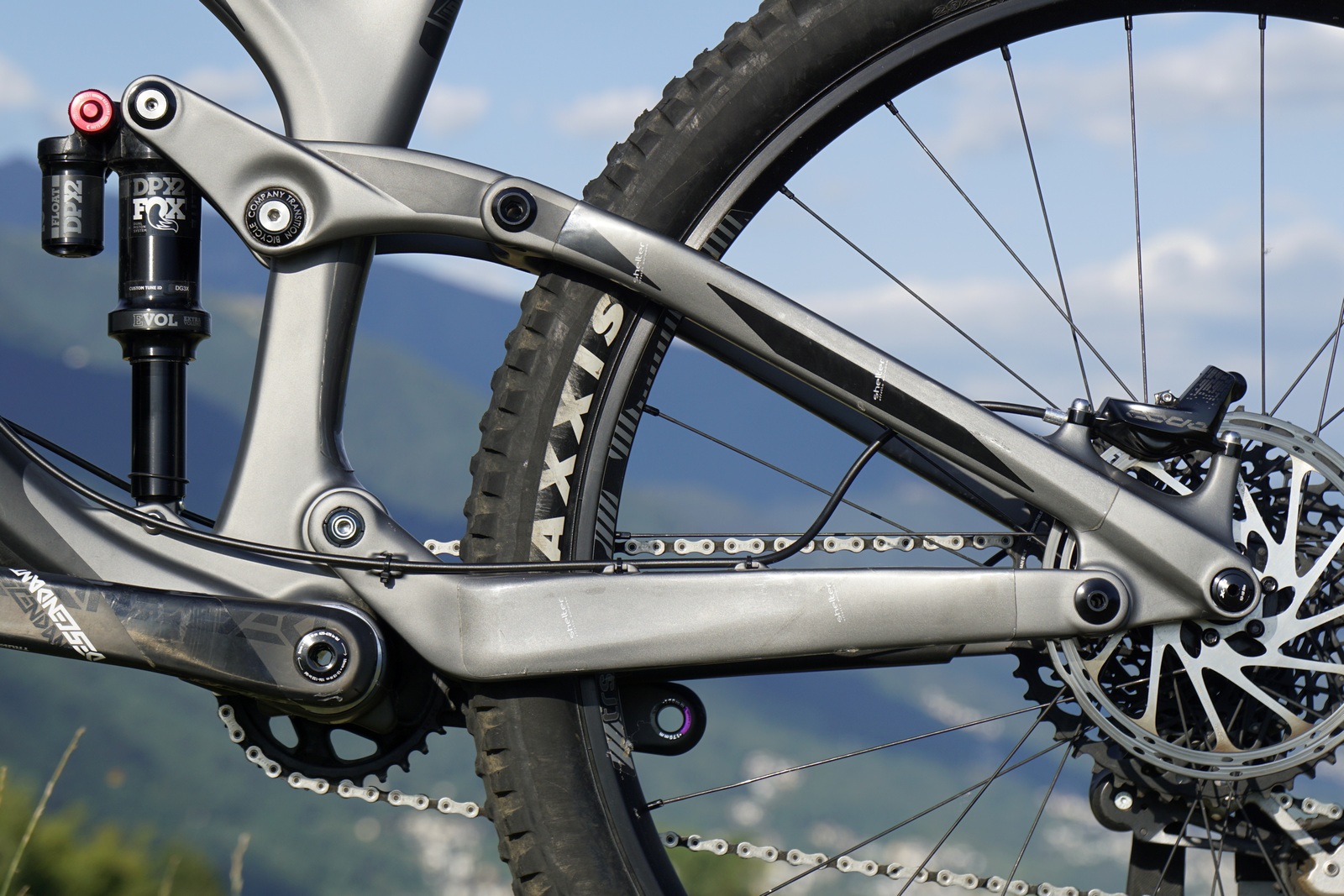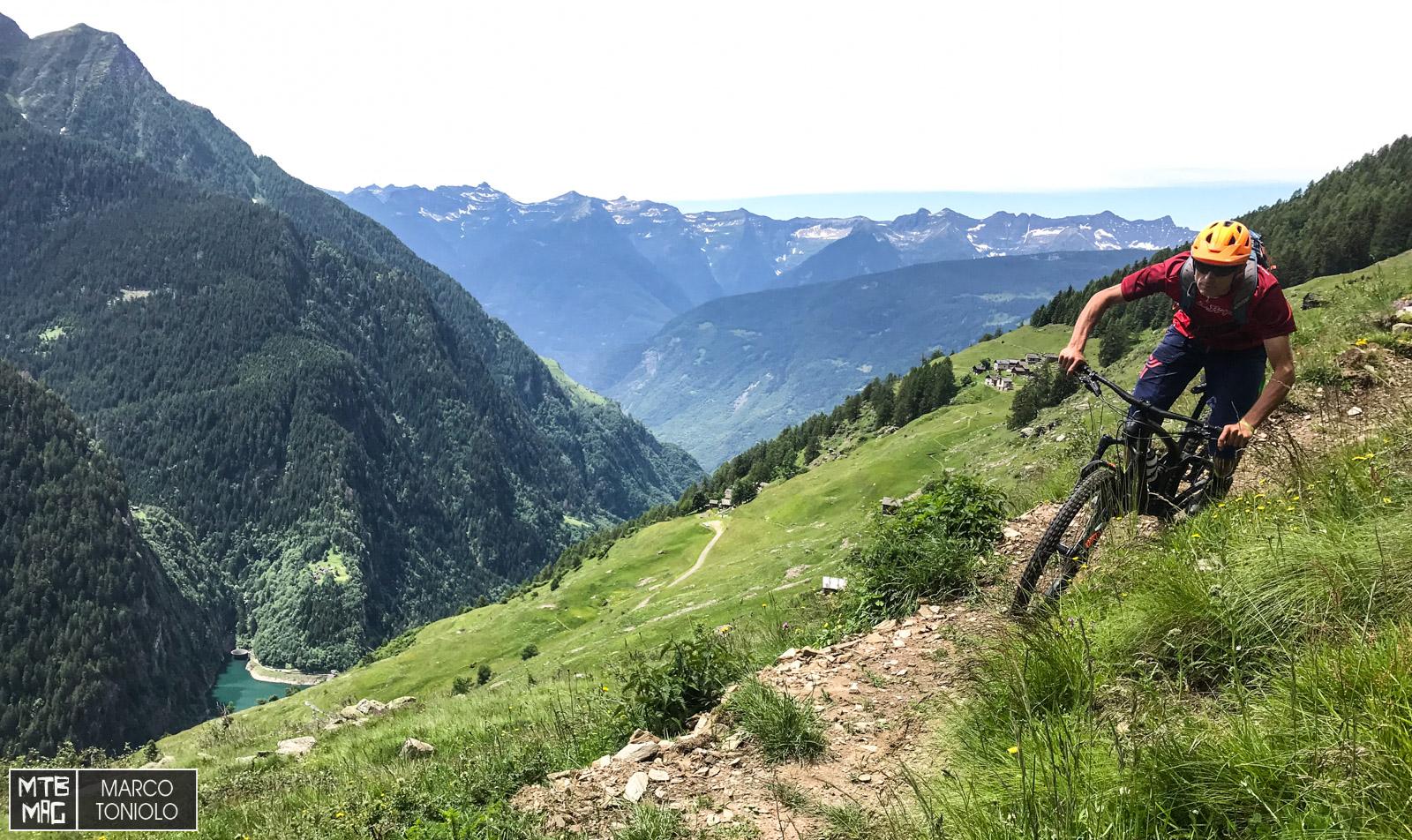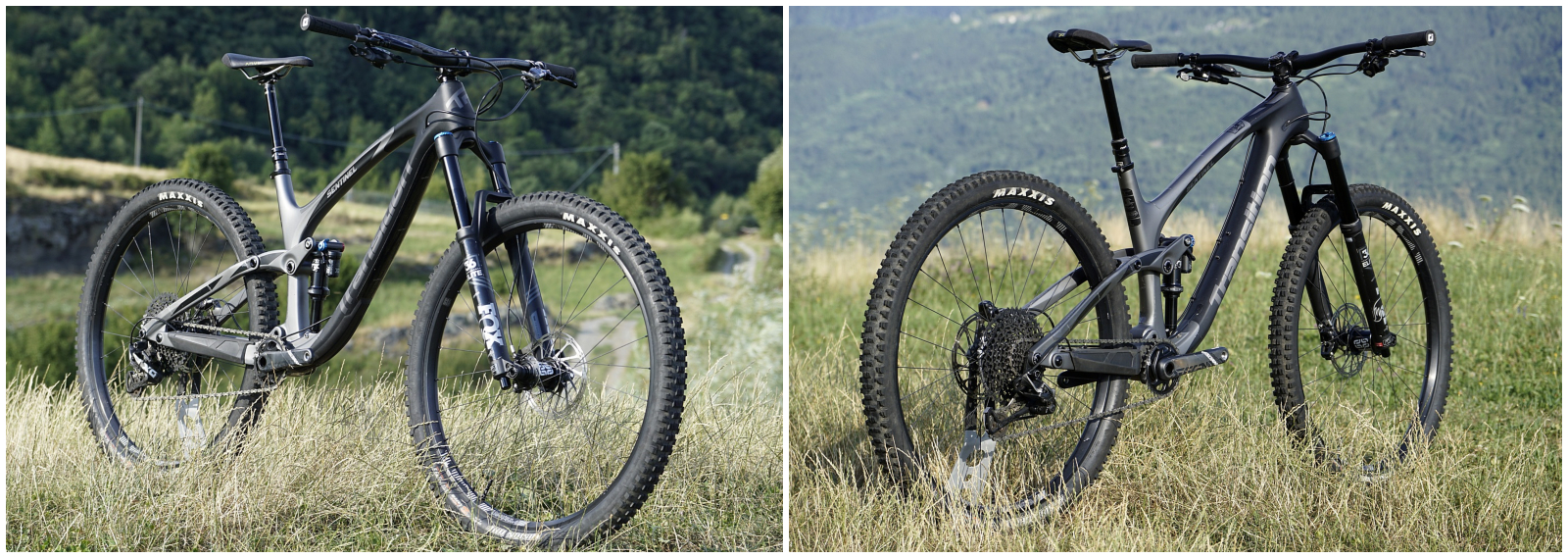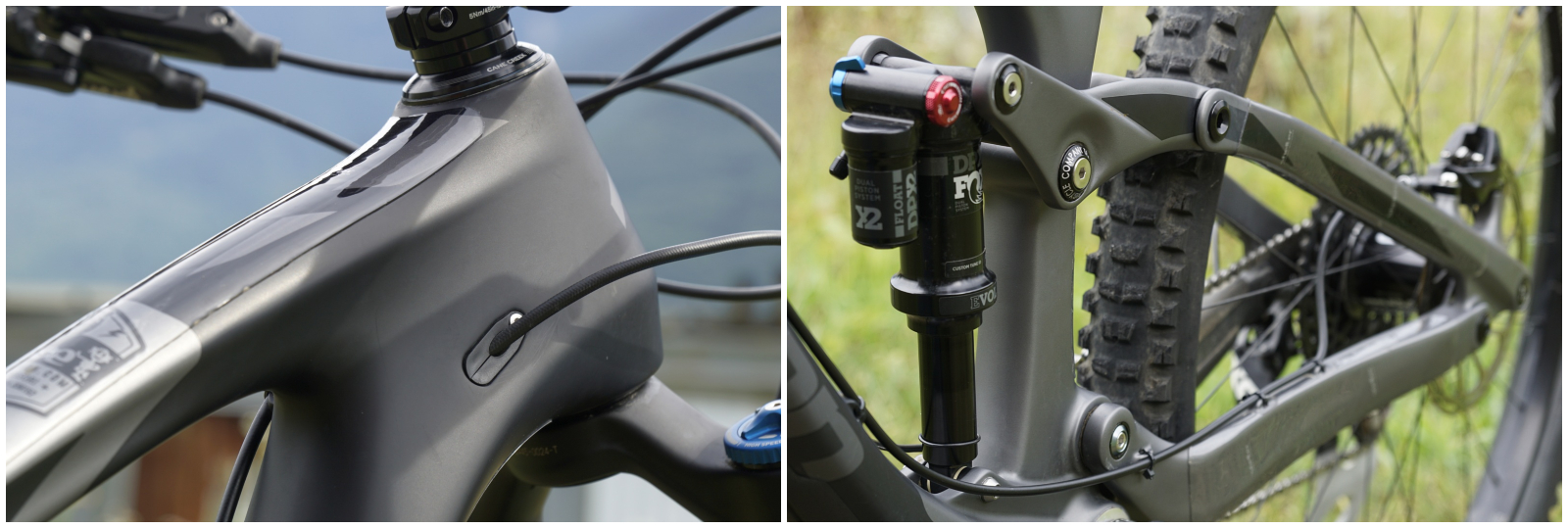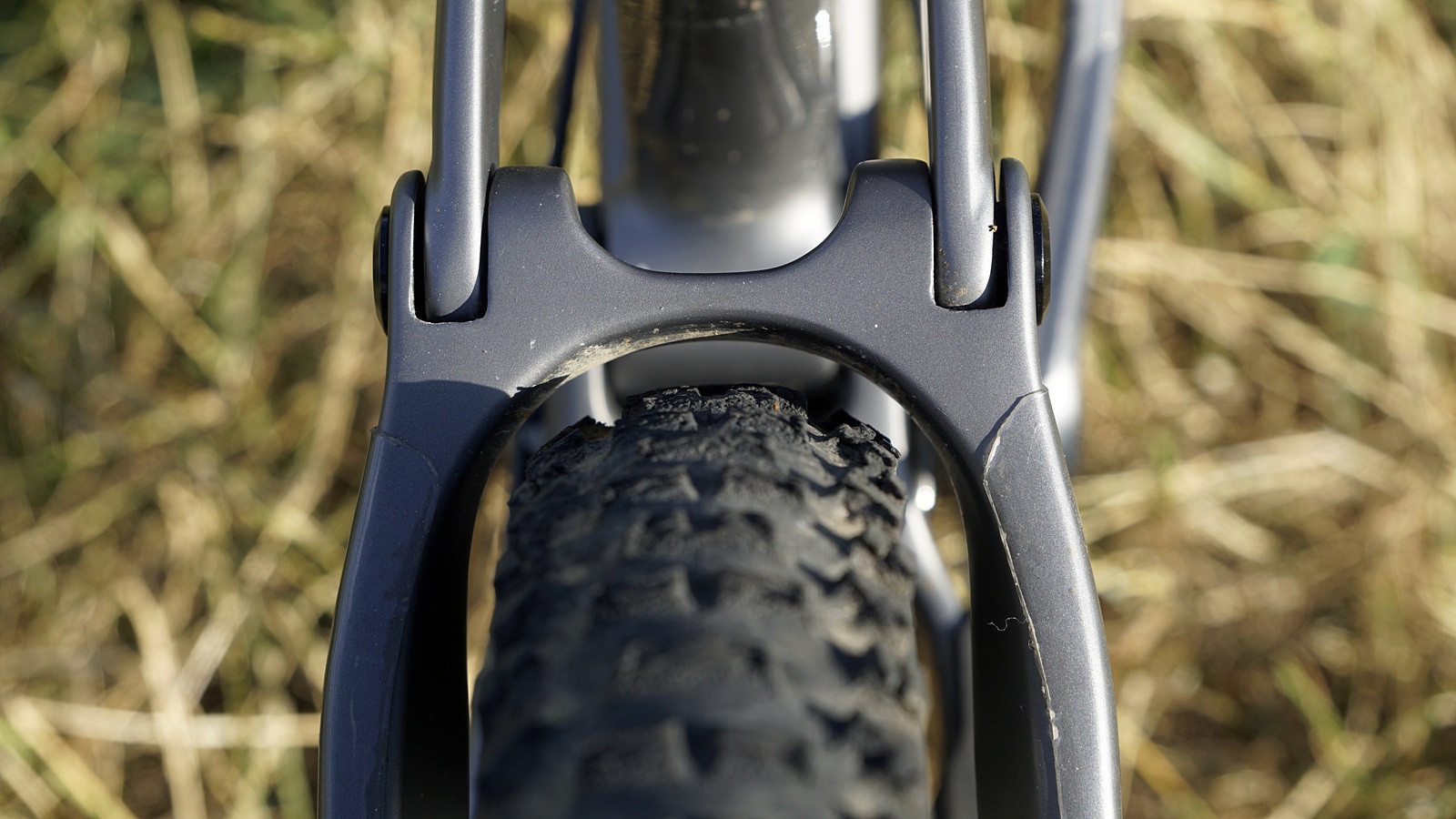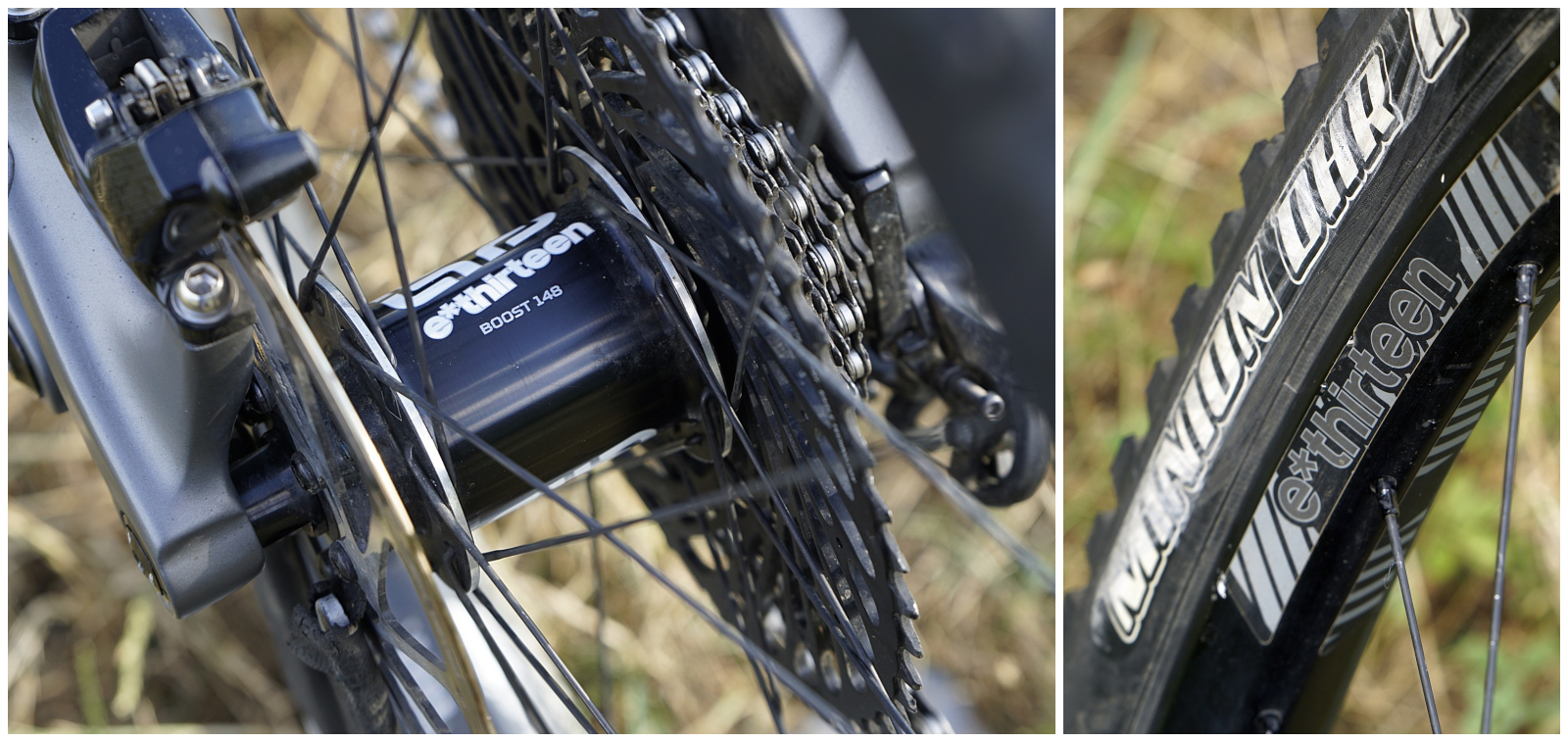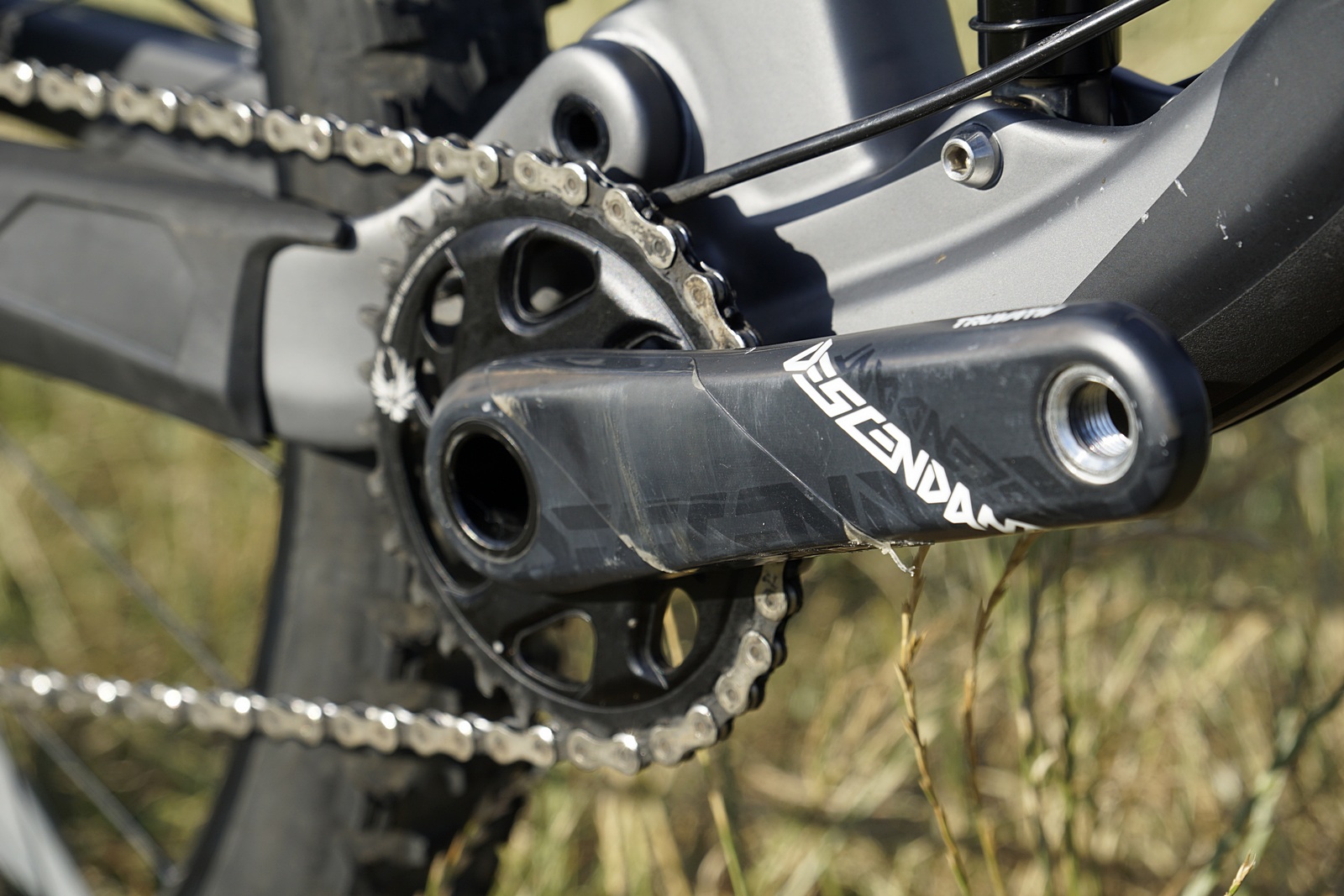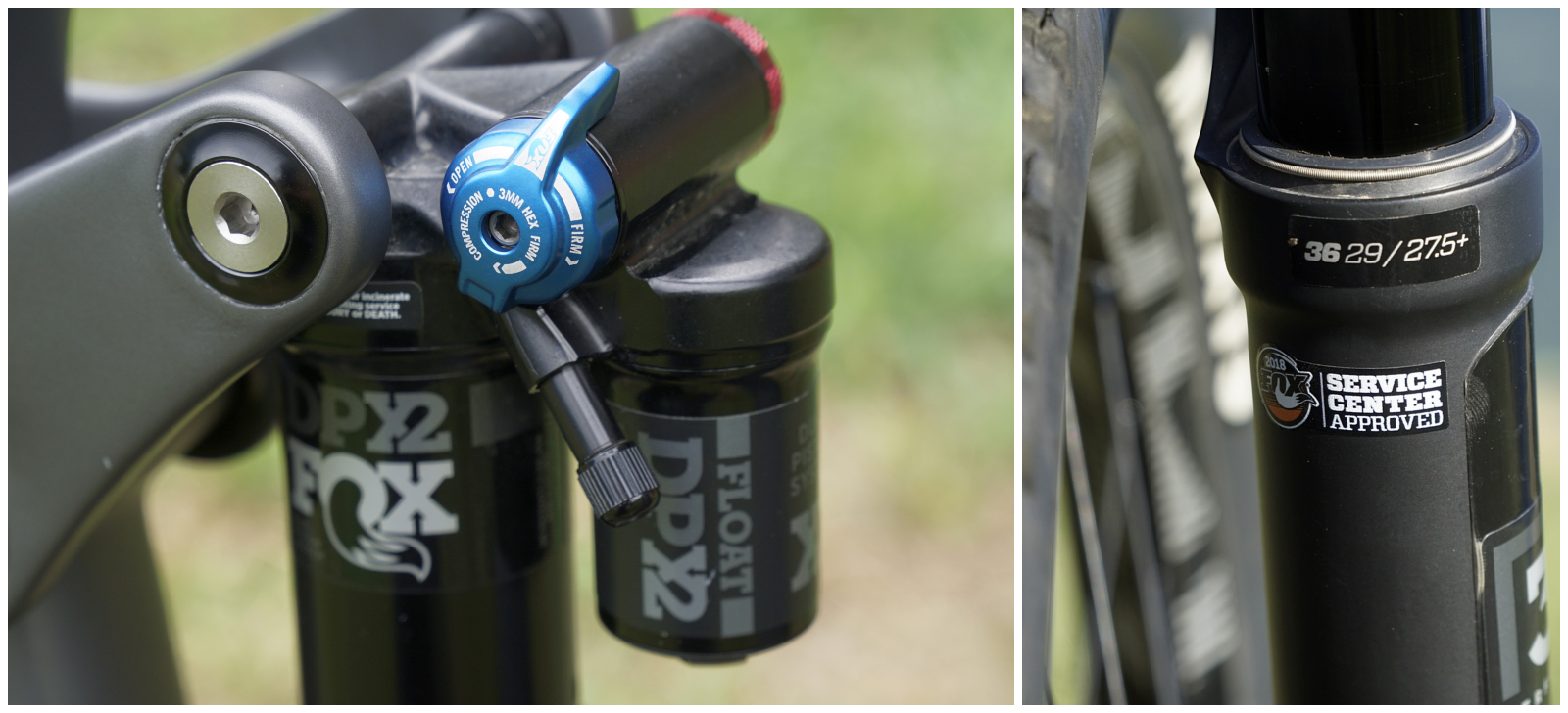[Tested] Transition Sentinel X01 Carbon
After our recent test of the Transition Patrol, many readers asked for a comparison with the Sentinel, the Enduro 29er from the American brand. We got ahold of the Sentinel in its top-level, X01 Carbon build, for another test and a head-to-head comparison between the two models. This is therefore going to be a slightly different review, in which we will also compare the two bikes throughout.
Despite the different length travel, 160mm at the front and 140mm at the rear for the Sentinel, there are a lot of common aspects, for example the Speed Balanced Geometry and the suspension scheme: a four bar with Horst link.
Sentinel X01 Carbon Highlights
- Frame material: Carbon
- Wheels format: 29” (max 2.5”)
- Suspension scheme: four bar with Horst link
- Adjustable geometry: no
- Front/rear travel: 160/140 mm
- Rear Boost : yes
- Fork Boost: yes / offset 43 mm
- Metric shock: yes (205×57.5 mm) / Trunnion Mount
- Tubeless ready rims and tires: yes
- Transmission: Eagle 1×12 with 30T chainring
- Derailleur mount: no
- ISCG mount: yes
- Water bottle cage mount: yes
- Frame only: available
- Measured weight on L size: 13.95 kg (with protective tape)
- Full bike price: 6,699.00 Euro
- Frame price: 3,299.00 Euro
Geometry
If the Patrol geometry is already somewhat extreme, with the Sentinel Transition designers went even further. Along with the same over the top numbers, mainly the 64° head tube angle, the wheel diameter is bigger, a thing which can negatively affect agility. The Speed Balance Geometry is put to task with a very tough challenge, considering its goal is minimizing the common side effects caused by a slack geometry. For those who didn’t read the Patrol test, or, even better, the article published at its launch, we emphasized that, unlike a more classic geometry, the SBG works with a longer reach, a more relaxed head tube angle, a more vertical seat tube, shorter stems and fork with reduced offset value.
Out of the box
Like the Patrol, the Sentinel comes in a carbon and an aluminum version, which we tested, with a more vivid colour called TR Blue, where blue replaces grey. On a full suspension bike the different behaviour of the two materials is generally more difficult to notice, but the savings in weight is measurable: more than 1 kilo less than the alloy version! Despite that, and the top-level components, at 13.95 kg without pedals (but heavily covered with protective tape) even the Sentinel is not among the lightest enduro models. Anyway, in return you get great stiffness and a solid ride quality.
From an aesthetic point of view, it is clear the two bikes come from the same designers. You’ll notice the same smooth line pointing upwards, the only difference being the front triangle, which is more curved on the Sentinel. Despite the short seat tube, and the low standover height, the Transition team did a great job to leave enough space for full sized water bottles (personally I used 750ml bottles). In the Patrol test, we loved the decision to put functionality above everything, including the technical information available on the Transition website. In all honesty, we couldn’t find the smallest detail out of place and the technical features are simply perfect.
Also in this case, the cable/hose routing is extremely clean and smooth. The fact that the brake cable is fully external confirms attention paid to the maintenance aspect, which is too often discarded to please the eye rather than to nod at practicality in maintenance.
On a bike with such an extreme geometry, having a short chainstay is necessary in order to not lose too much agility. A short rear triangle, beside improving stiffness, ufortuantely limits the space available for the tire. Transition declared for the Sentinel a maximum tire width of 2.5”, but considering the margin left by the standard 2.3” Maxxis, we are a bit doubtful about installing a 2.5” tire without having interference when muddy.
Hub dimensions and free wheel sound don’t let the E*Thirteen TRS+ wheels pass by unnoticed and the 30mm inner diameter rim channel allows you to install tires up to 2.5” wide. The wheelset strongly affects the behaviour of a bike, and, considering in this article we’re doing a comparison with the Patrol, it is interesting to see that the increase of weight due to the bigger diameter is totally compensated by the overall weight of the set, which is lighter than the ones installed on the Patrol (with the same diameter, of course).
Despite the stress they had to deal with, the wheels remained well centered, while, as already noticed with the Patrol, we had the feeling the sides of the rims wouldn’t cope very well with bit hits. Although it had never been pinched and I’ve always used a rather high pressure, at the end of the test the rear wheel was slightly deformed on one side. We also heard some squeaking at the rear during violent compressions.
All in all, wheels are good for the target use of the bike, and the small issues we noticed could be probably solved by installing a more solid rear tire. We express the same idea we had with the Patrol: bikes with such a heavy downhill potential deserve a more solid and reliable rear tire than the EXO 3C Maxxis.
The crankset is also made of carbon: SRAM Descendant Carbon with 170 mm crank arms. Racers and highly trained riders might want a 32T chainring, but a 30T will satisfy the wider range of riders out there.
The Speed Balance Geometry shows how it is possible nowadays to combine slack angles and reactivity on a 29er, by working on different geometric ratios at the same time. One of these parameters is the height of the bottom bracket, which needs to be rather low, as you could imagine. On the tested Sentinel we measured it at 340mm, while on the charts provided by Transition the “calculated” height is 345mm. While the low bottom bracket (340mm is not an extreme value) helps improve stability and handling, on the other hand it is easier to hit the ground with the pedals and also with the crankset on slow and technical descents. Since we occasionally experienced that with the Sentinel, we would recommend installing a bashring, which is very easy given the ISCG mount on the frame.
Another characteristic of the SBG is the short stem, in this case a 40mm RaceFace Turbine. From the same series is the great 800mm Sweep handlebar, the same size I use on my own bike, so I felt comfortable straight away.
On paper, SRAM Code RSC brakes are well suited for the high downhill performance of the Sentinel. Combined with 180mm discs both at the front and at the rear, on trail they worked very smoothly and were powerful enough. As it always happens to me with SRAM models, I couldn’t find a good feeling with the lever, with the travel being a bit long and “spongy”. All the controls come from SRAM, and it was a good choice, since the setup is simply perfect.
On the Patrol we were not satisfied with the 150mm dropper post choice, in our opinion it was too short on a size large with a 440mm seat tube. On the Sentinel we swapped to a 170mm Reverb, with the awesome 1x remote. We attest, once again to the comfort of the ANVL Forge Stealth Cromo seat, but remember, it can vary according to personal taste.
Apart from the cheaper NX drivetrain, on the Sentinel we find the Fox DPX2 Performance Elite shock, one of the best air models in its category (and overall…). The three-position compression control is handy and effective, while a second low speed adjuster allows you to fine tune the Open position, a plus for those who have the knowledge to exploit it. Like on the Patrol, the Trunnion Mount is used and the shock length is 205mm. With a shorter wheel travel to manage, it was possible to use the 57.5mm version instead of the 65mm one, without increasing the compression ratio, which is approximately identical that of the Patrol.
Up front the 160mm Fox 36 Float RC2 Performance Elite fork is spec’d – a milestone in the Enduro segment. Even the best can make a mistake once in a while though, and the fork installed on the Sentinel suffered from air loss from the main chamber, which heavily affected its behaviour. The fork was sent to Fox and it was back, perfectly functioning in a couple of days.
Every cloud has a silver lining: while the 36 was away for maintenance, we took the chance to have a couple of rides with the Rock Shox Lyrik with the same travel but standard offset (the action pictures have been taken during one of those rides, on a very windy downhill track). Despite one of the main points of the Speed Balance Geometry is the reduced fork offset, this experiment is not so crazy as it may sound, since Transition offers also the frame, on which one could potentially install, maybe just temporarily, his own standard offset fork. We will tell you how it was in the downhill paragraph…

Climbing
In the Patrol test, we liked the comfortable riding position during long pedalling trails, but the bike suffered a bit from its high overall weight, most of all on long and technical climbs, when the low bottom bracket and the shock, which tends to sink in the travel very easily, contributes to fatigue. It was rather predictable that the Sentinel could do better, and unsurprisingly, we were impressed. Let’s start by saying the lighter weight is definitely a plus on easy climbs, terrain where the Patrol also behaves well. The difference is felt mostly on technical sections, where you don’t just try to somehow climb to the top, but you can also perform well and have more fun than with most of the modern Enduro weapons.
There are many strong points: the steep seat angle, which helps keep the bike in line on steep climbs, despite the short rear triangle, the increased traction of the 29” wheels compared to the 27.5” ones. The trump card, though, was to have a shorter rear travel and at the same time not too low of a bottom bracket: these two parameters, together with the chance to fine tune the DPX2 compression, result in the Sentinel being a very good climber, able to compete on this terrain with bikes in smaller travel categories.
This is an important aspect which widens the range of use of this bike greatly, and confirms what we’ve written many times already: at present, the maximum versatility is obtained by 29ers with aggressive geometry and moderate travel (rear in particular).
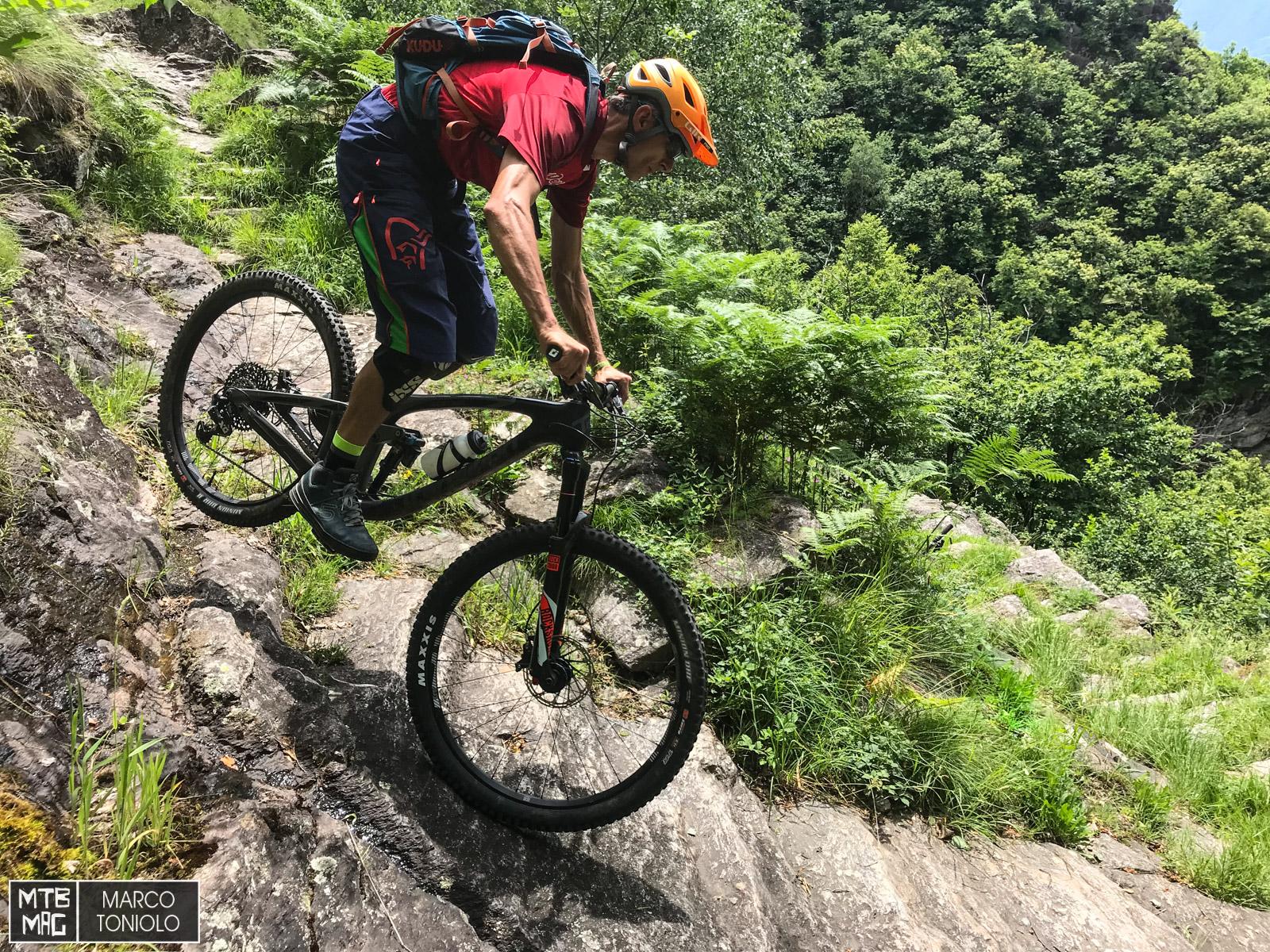
Downhill
Not by chance, as the first downhill to ride with the Sentinel, I chose a twisty, winding trail which I know very well and I have precise references on. But before starting the ride I couldn’t stop thinking about three numbers: 64-1247-29, head angle, L-size wheelbase and wheel diameter respectively. How hard would it be to ride through those tight turns with such extreme values? The answer is “not more than with far less extreme bikes on paper, even in the 27.5′ format”.
Provided that you ride aggressively enough, as any modern enduro bikes require, the Sentinel is nimble and precise, but also easy and intuitive beyond any expectations. The Patrol had already behaved very well but, given the bigger wheel format and the more lax geometry, in this case the outcome is even better. It would be too much to say the Sentinel is a “playful” bike, for example it is rather to manual, but it gets full marks in terms of agility.
Let’s talk a bit about the behaviour with a classic offset fork, since we had the chance to test the Sentinel also in this configuration. Once again the Sentinel was a big surprise, well balanced and still handy enough, so much I don’t see any major setbacks in installing classic forks. Someone may now say the reduced offset thing is just fluff, but we want to highlight that the sum of parts are what determined the positive results of this project, undoubtedly.
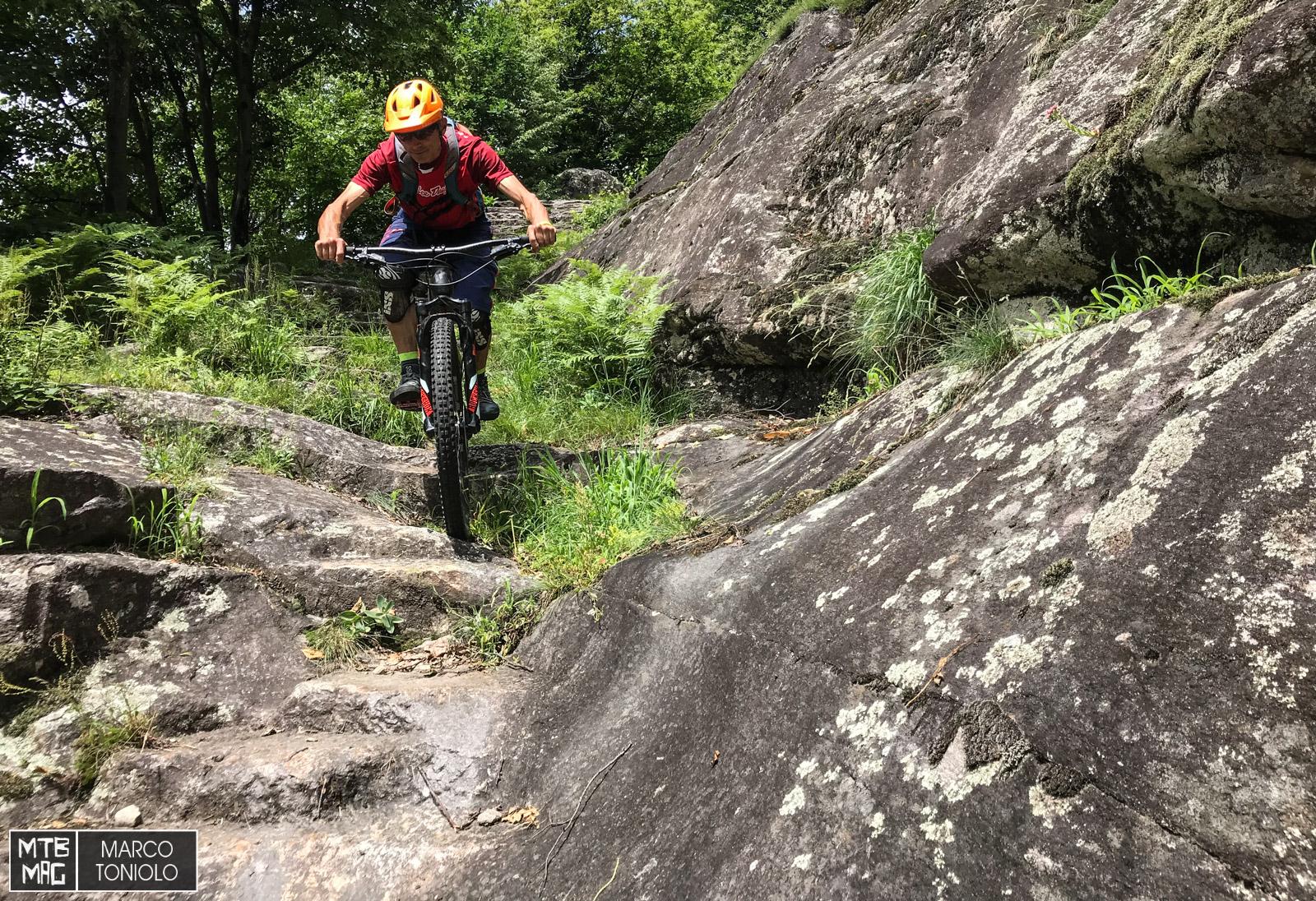
If up until now, the behaviour of the Sentinel was quite similar to that of the Patrol, on rough and fast ground and especially on sprints, things change slightly. Although also for the Sentinel we found the sag value suggested by Transition to be perfect, we have to distinguish between the different suspension systems, especially the rear one. If the excellent early travel sensitivity and compression curve are similar, with a perfectly adjusted progressivity that’s able to soak up even the biggest hits, the shorter travel and the lighter weight convey a more active behaviour in the rear triangle . We’re talking about small details, since the bigger wheel diameter and aggressive geometry provide a total safety net and high margins even when the going gets tough.
Given what we said in the climbing paragraph, to sprint with the open shock is not much of a problem. On this aspect the Sentinel is better than the Patrol, compensating the heavier wheelset (tires included) with the lower overall weight, but mainly thanks to a less divey rear suspension, which avoids clipping the ground with the pedals. It’s more nimble than you could ever imagine by reading the charts, plus it conveys safety and stability at high speeds as predicted, which is effective on sprints, thanks to the reduced travel and the rear suspension design. Maybe if you’re looking for a pure enduro weapon you would still prefer the Patrol, but don’t forget the Sentinel combines all these characteristics with improved pedaling performance.
Conclusions
A perfect combination of a short rear travel and great rear suspension behaviour through the Speed Balance Geometry, the Sentinel raises the versatility bar for modern enduro 29ers, to a point hardly imaginable a few years ago. Regarding the comparison with the Patrol, I prefer the latter when riding downhill, but the Sentinel clearly wins the versatility prize and it would undoubtedly be my choice for broad, all-mountain use.
The post [Tested] Transition Sentinel X01 Carbon appeared first on MTB-MAG.COM.

